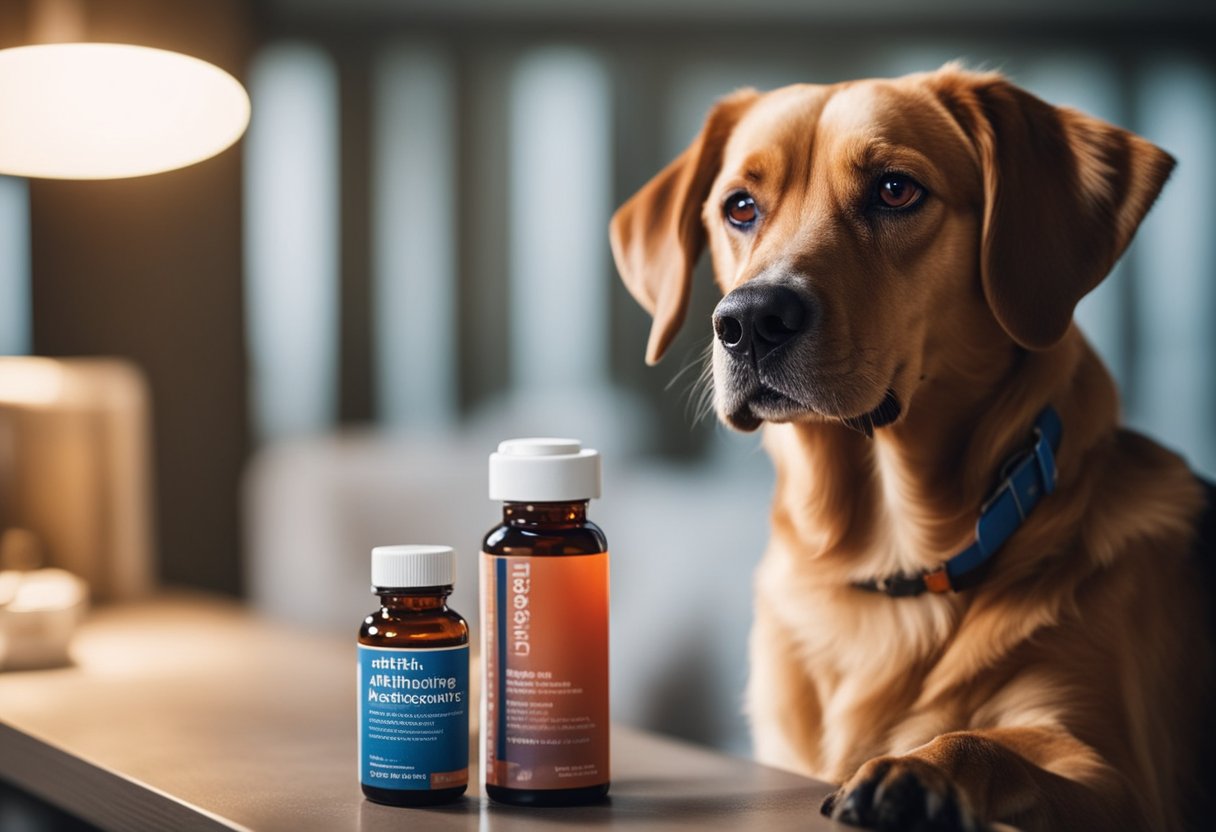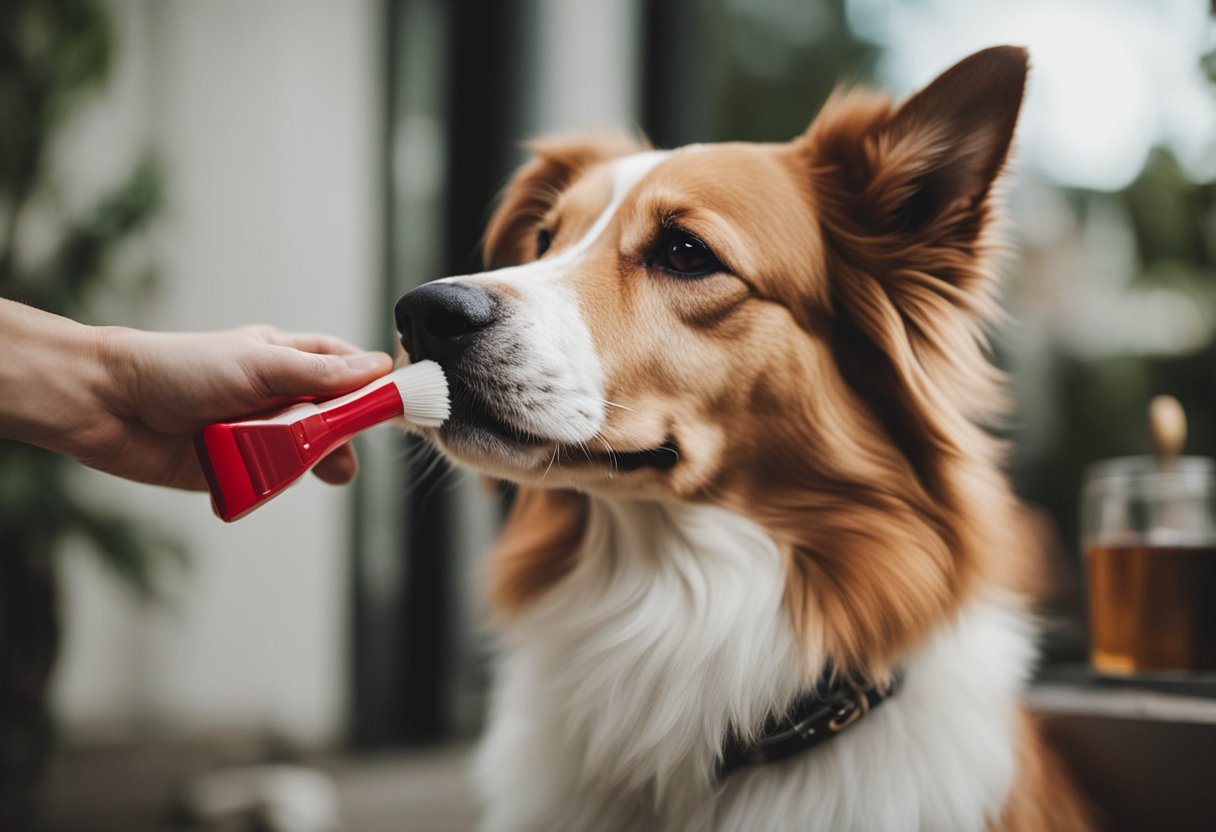Dog Allergy and Treatments: What You Need to Know
If you’re a dog owner, you know how much joy and love they can bring into your life. Unfortunately, owning a dog comes with the risk of allergies. Dog allergies are a common problem and can be caused by a variety of factors, including pet dander, saliva, and urine.

Understanding the symptoms of dog allergies is the first step in treating them. Common symptoms include itchy skin, hives, coughing, sneezing, and watery eyes. In severe cases, dog allergies can lead to anaphylaxis, a life-threatening allergic reaction. If you suspect that you or someone you know is experiencing anaphylaxis, seek medical attention immediately.
There are several treatment options available for dog allergies, including medications, immunotherapy, and lifestyle changes. Medications such as antihistamines, decongestants, and corticosteroids can help alleviate symptoms. Immunotherapy, also known as allergy shots, can help reduce the severity of dog allergies over time. Lifestyle changes such as bathing your dog regularly, using air purifiers, and keeping your home clean can also help reduce exposure to allergens.
Key Takeaways
- Dog allergies can be caused by pet dander, saliva, and urine.
- Common symptoms of dog allergies include itchy skin, hives, coughing, sneezing, and watery eyes.
- Treatment options for dog allergies include medications, immunotherapy, and lifestyle changes.
Understanding Dog Allergies

If you have a dog, it’s important to understand the causes, symptoms, and diagnosis of dog allergies. Many dogs suffer from allergies, which can cause discomfort and even lead to serious health problems if left untreated. In this section, we’ll explore the basics of dog allergies and what you can do to manage them.
Causes of Dog Allergies
Dog allergies can be caused by a variety of factors, including:
- Environmental Allergens: These include things like pollen, dust mites, and mold. Dogs can be allergic to the same things that humans are allergic to, and these allergens can cause a range of symptoms in dogs.
- Food Allergies: Some dogs are allergic to certain ingredients in their food, such as beef, chicken, or grains. Food allergies can cause a range of symptoms, including skin irritation, digestive problems, and respiratory issues.
- Flea Allergies: Some dogs are allergic to flea bites, which can cause intense itching and discomfort. Even a single flea bite can trigger an allergic reaction in some dogs.
- Contact Allergies: Dogs can also be allergic to certain materials, such as wool or synthetic fabrics. These allergies can cause skin irritation and other symptoms.
Symptoms and Diagnosis
The symptoms of dog allergies can vary depending on the type of allergy and the severity of the reaction. Some common symptoms include:
- Itchy, Red Skin: Dogs with allergies often have itchy, red skin that may be accompanied by bumps, rashes, or scabs.
- Ear Infections: Allergies can cause ear infections in dogs, which can lead to symptoms like head shaking, scratching at the ears, and discharge from the ears.
- Digestive Problems: Food allergies can cause digestive problems in dogs, such as vomiting, diarrhea, and gas.
- Respiratory Issues: Environmental allergies can cause respiratory issues in dogs, such as coughing, sneezing, and difficulty breathing.
If you suspect that your dog has allergies, it’s important to have them diagnosed by a veterinarian. Your vet may perform a skin test or blood test to determine the cause of your dog’s allergies. Once the cause has been identified, your vet can recommend a treatment plan to help manage your dog’s symptoms.
Treatment Options

If your dog has allergies, there are various treatment options available to help manage their symptoms. These treatments can be divided into three categories: medical treatments, lifestyle adjustments, and preventive measures.
Medical Treatments
Medical treatments for dog allergies include antihistamines, corticosteroids, and immunotherapy. Antihistamines, such as Benadryl, can help relieve itching and other allergy symptoms. Corticosteroids, such as prednisone, can also help reduce inflammation and itching. However, long-term use of corticosteroids can have side effects, so they should only be used under the guidance of a veterinarian.
Immunotherapy, also known as allergy shots, involves injecting your dog with small amounts of the allergen over time to help them build up immunity. This treatment can be effective, but it requires a lot of time and commitment from both you and your veterinarian.
Lifestyle Adjustments
Lifestyle adjustments can also help manage your dog’s allergies. Regular baths with a hypoallergenic shampoo can help remove allergens from their skin and coat. Keeping your home clean and dust-free can also help reduce the amount of allergens in the environment. Vacuuming regularly, washing bedding and toys, and using air purifiers can all be helpful.
In addition, avoiding certain foods or environmental triggers that your dog is allergic to can also help reduce their symptoms. Your veterinarian can help you identify these triggers and develop a plan to avoid them.
Preventive Measures
Preventive measures can help reduce the likelihood of your dog developing allergies in the first place. Feeding your dog a high-quality diet and providing them with plenty of exercise and mental stimulation can help boost their immune system and reduce their risk of developing allergies. Regular veterinary check-ups can also help identify and treat any potential health issues before they become more serious.
In addition, if you are considering getting a new dog, choosing a breed that is less likely to develop allergies can also be helpful. Breeds such as poodles, schnauzers, and bichon frises are known to be hypoallergenic and may be a good choice for allergy sufferers.
Overall, managing your dog’s allergies can be challenging, but with the right treatment plan and lifestyle adjustments, you can help keep your furry friend healthy and comfortable. Consult with your veterinarian to develop a plan that is tailored to your dog’s specific needs.
Resources

If you suspect that your dog has allergies, it’s important to take them to a veterinarian for a proper diagnosis. Once your dog has been diagnosed with allergies, there are a number of resources available to help you manage their symptoms and improve their quality of life.
Allergy Testing
Allergy testing is an important step in identifying the cause of your dog’s allergies. Your veterinarian may recommend intradermal skin testing or blood testing to determine the specific allergens that are causing your dog’s symptoms. Once the allergens have been identified, you can take steps to avoid them and reduce your dog’s exposure.
Medications
There are a number of medications available to help manage your dog’s allergy symptoms. Antihistamines, corticosteroids, and immunotherapy are all commonly used to reduce itching, inflammation, and other allergy-related symptoms. Your veterinarian can help you choose the best medication for your dog based on their individual needs.
Allergy-Friendly Products
There are a number of products available that are designed to help reduce your dog’s exposure to allergens. Hypoallergenic shampoos, air purifiers, and allergen-free bedding can all help reduce your dog’s symptoms and improve their overall comfort.
Support Groups
If you’re struggling to manage your dog’s allergies, there are a number of support groups available that can help. These groups can provide you with information, resources, and emotional support as you navigate the challenges of caring for a dog with allergies.
For more information about dog allergies and treatments, check out the following resources:
Conclusion

Managing dog allergies requires a balanced approach, incorporating treatment, management, and lifestyle adaptation. With the right strategies, it’s possible to enjoy the companionship of a dog without compromising your health.
Some of the most effective treatments for dog allergies include antihistamines, immunotherapy, and corticosteroids. You may also find relief by using air purifiers, washing your dog regularly, and avoiding allergens.
It’s important to work with your veterinarian to develop a treatment plan that’s right for you and your dog. Your vet can help you identify the specific allergens that are causing your symptoms and recommend the most effective treatments.
In addition to medical treatments, there are several lifestyle changes you can make to help manage your dog allergies. These include keeping your home clean and free of allergens, washing your hands frequently, and avoiding contact with other animals that may trigger your symptoms.
By taking a proactive approach to managing your dog allergies, you can enjoy the many benefits of dog ownership without compromising your health.
Frequently Asked Questions

What are the common symptoms of allergies to dogs in adults?
Allergic reactions to dogs can cause a range of symptoms, including sneezing, a runny or stuffy nose, itchy or watery eyes, and skin rashes or hives. In some cases, allergic reactions may also cause breathing difficulties, such as wheezing or shortness of breath.
How can one manage dog allergy symptoms effectively at home?
There are several ways to manage dog allergy symptoms at home. You can try to reduce your exposure to allergens by keeping your home clean and free of pet hair and dander. You can also use air purifiers or HEPA filters to remove allergens from the air. Over-the-counter antihistamines or nasal sprays may also help alleviate symptoms.
What are the available medical treatments for humans with dog allergies?
Medical treatments for dog allergies include prescription antihistamines, corticosteroids, and immunotherapy. Immunotherapy involves receiving regular injections of small amounts of the allergen to build up your immune system’s tolerance to it over time.
How can a dog’s allergic reactions be treated?
If your dog is experiencing allergic reactions, your veterinarian may recommend antihistamines or corticosteroids to alleviate symptoms. In some cases, immunotherapy may also be an option.
What steps can be taken to identify the cause of a dog’s allergies?
Identifying the cause of a dog’s allergies can be challenging, but your veterinarian may recommend allergy testing or elimination diets to help pinpoint the source of the problem. Once the allergen is identified, steps can be taken to reduce your dog’s exposure to it.
Are there any preventative measures for reducing pet dander allergies in humans?
To reduce your risk of developing allergies to pet dander, it’s important to limit your exposure to pets. If you already have a pet, you can try to reduce your exposure to allergens by keeping your home clean and free of pet hair and dander. Using air purifiers or HEPA filters may also help remove allergens from the air.
